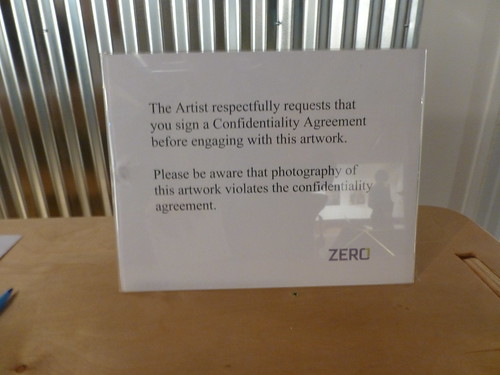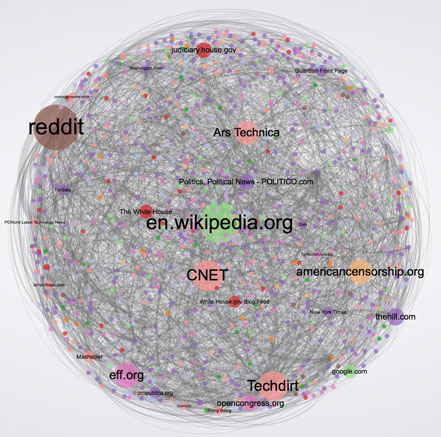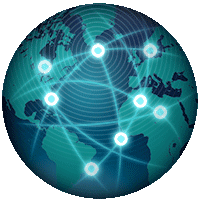This sketch is in part motivated by a massive proliferation of copyright and copyright-like licenses for government/public sector information, e.g., sub- and sub-sub-national jurisdiction licenses and sector- and jurisdiction-specific licenses intended to combat license proliferation within a sector within a jurisdiction. Also by longstanding concern about coordination among entities working to limit barriers to use of PSI and knowledge commons governance generally.
Everything following concerns PSI only relative to copyright and copyright-like barriers. There are other pertinent regulations and considerations to follow when publishing or using PSI (e.g., privacy and fraud; as these are pertinent even without copyright, it is silly and unnecessarily complicating to include them in copyright licenses) and other important ways to make PSI more useful technically and politically (e.g., open formats, focusing on PSI that facilitates accountability rather than openwashing).
Eliminate copyright and copyright-like restrictions
No longer barriers to use of PSI, because no longer barriers to use of information. May be modulated down to any general copyright or copyright-like barrier reduction, where the barrier is pertinent to use of PSI. Examples: eliminate sui generis database restrictions where they exist, increase threshold of originality required for information to be subject to copyright restriction, expand exceptions and limitations to copyright restrictions, expand affirmative user rights.
Eliminate copyright and copyright-like restrictions for PSI
For example, works produced by employees of the U.S. federal government are not subject to copyright restrictions in the U.S. Narrower exclusions from copyright restrictions (e.g., of laws, court rulings) are fairly common worldwide. These could be generalized to include eliminate copyright and copyright-like restrictions for PSI, worldwide, and expanded to include PSI produced by contractors or other non-government but publicly funded entities. PSI could be expanded to include any information produced with public funding, e.g., research and culture funded by public grants.
“Standard” international licenses for PSI
Public copyright licenses not specifically intended for only PSI are often used for PSI, and could be more. CC0 is by far the best such license, but other Creative Commons (CC) and Open Data Commons (ODC) licenses are frequently used. Depending on the extent to which the licenses used leave copyright and copyright-like restrictions in place (e.g., CC0: none; CC-BY-NC-ND, lots, thus considered non-open) and how they are applied (from legislative mandate for all PSI to one-off use for individual reports and datasets at discretion of agency), could have effect similar to eliminating copyright and copyright-like restrictions for PSI, or almost zero effect.
Universal Government License
Governments at various levels have chosen to make up their own licenses rather than use a standard international license. Some of the better reasons for doing so will be eliminated by the forthcoming version 4.0 of 6 of the CC licenses (though again, CC0 has been the best choice, since 2009, and will remain so). But some of the less good reasons (uncharitable characterization: vanity) can’t be addressed by a standard international license, and furthermore seem to be driving the proliferation of sub-sub-national licenses, down to licenses specific to an individual town.
Ideally this extreme license proliferation trend would terminate with mass implementation of one of the above options, though this seems unlikely in the short term. Maybe yet another standard license would help! The idea of an “open government license” which various governments would have a direct role in creating and stewarding has been casually discussed in the past, particularly several years ago when the current proliferation was just beginning, the CC 4.0 effort had not begun, and CC and ODC were not on the same page. Nobody is particularly incented to make this unwieldy project happen, but nor is it an impossibility — due to the relatively small world of NGOs (such as CC and the Open Knowledge Foundation, of which ODC is a project) and government people who really care and know about public licenses, and the possibility their collective exhaustion and exasperation over license details, incompatibility, and proliferation could reach a tipping point into collective action. There’s a lot to start from, including the research that went into CC-BY-4.0, and the OGL UK 2.0, which is a pretty good open license.
But why think small? How many other problems could be addressed simultaneously?
- Defend the traditional meaning of ‘open government’ by calling the license something else, e.g., Universal/Uniform/Unified Government License.
- Rallying point for public sector worldwide to commit more firmly and broadly to limiting copyright and copyright-like barriers to use of PSI, more rapidly establishing global norm, and leading to mandates. The one thing to be said for massive PSI license proliferation could be increased commitment from proliferating jurisdictions to use their custom licenses (I know of no data on this). A successful UGL would swamp any increased local commitment due to local vanity licenses through much higher level expectation and mandate.
- Make the license work well for software (including being approved by the Open Source Initiative), as:
- Generically “open” licenses are inevitably used for software, whether the steward apparently intends this (OGL UK 2.0) or does not (CC).
- The best modern permissive license for software (Apache 2.0) is relatively long and unreadable for what it does, and has an discomfiting name (not nearly as bad as certain pro sports organizations, but still); it ought be superseded.
- Ensure the license works for other domains, e.g., open hardware, which don’t really require domain-specific licenses, are headed down the path of proliferation and incompatibility, and that governments have obvious efficiency, regulatory, security, and welfare interests in.
- Foster broader “open innovation community” engagement with government and public policy and vice versa, and more knowledge transfer across OIC domains, on legal instruments at the least.
- Uniform Public License may be a better name than UGL in some respects (whatever the name, it ought be usable by the public sector, and the general public), but Government may be best overall, a tip of the hat to both the vision within governments that would be necessary to make the license succeed, and to the nature of copyright and copyright-like barriers as government regulatory regimes.
National jurisdiction licenses for PSI
A more likely mechanism for license proliferation deceleration and harm reduction in the near term is for governments within a national jurisdiction to use a single license, and follow various license stewardship and use best practices. Leigh Dodds recently blogged about the problem and highlighted this mechanism in a post titled The Proliferation of Open Government Licences.
Sub-national jurisdiction licenses for PSI
Each province/state and sub-jurisdiction thereof, down to towns and local districts, could use its own vanity license. This appears to be the trend in Canada. It would be possible to push further in this direction with multiple vanity licenses per jurisdiction, e.g., various licenses for various kinds of data, reports, and other materials.
Licenses for each PSI dataset or other work
Each and every government dataset or other publication could come with its own bespoke license. Though these licenses would grant permissions around some copyright and copyright-like restrictions, I suspect their net effect would be to heighten copyright and copyright-like restrictions as a barrier to both the use and publication of PSI, on an increased cost basis alone. This extreme highlights one of the downsides of copyright licenses, even unambiguously open ones — implementing, understanding, and using them can be seen as significant cost centers, creating an additional excuse for not opening materials, and encouraging the small number of people who really understand the mechanisms to be jealous and wary of any other reform.
None
Included for completeness.
Privatization of PSI copyright
Until now, I’ve assumed that copyright and copyright-like restrictions are barriers to use of PSI. But maybe there aren’t enough restrictions, or they aren’t allocated to the right entities, such that maximum value is realized from use of PSI. Control of copyright and copyright-like restrictions in PSI could be auctioned off to entities with the highest ability to extract rents from PSI users. These businesses could be government-owned, with various public-private partnerships in between. This would increase the direct contribution of PSI to GDP, incent the creation and publication of more PSI, ensure PSI is maintained and marketed, reaching citizens that can affordneed it, and provide a solid business model for Government 2.0, academia, cultural heritage, and all other publicly funded and publicly interested sectors, which would otherwise fail to produce an optimal level of PSI and related materials and innovations.
…
Do not let any of the above trick you into paying more attention to possible copyright and copyright-like barriers and licenses than actually doing stuff, especially with PSI, especially with “data”, doubly with “government data”.
I agree with Denny VrandeÄić’s paradoxical sounding but correct directive:
Data is free. Free the data!
I tried to communicate the same in a chapter of the Data Journalism Handbook, but lacked the slogan.
Data is free. Free the data!
And what is not data? ☻
…
Addendum: Entirely by coincidence (in response to a European Commission consultation on PSI, which I had already forgotten about), today posts by Timothy Vollmer for the Communia Association and Creative Commons call out the license proliferation problem and endorse public domain as the default for PSI.







